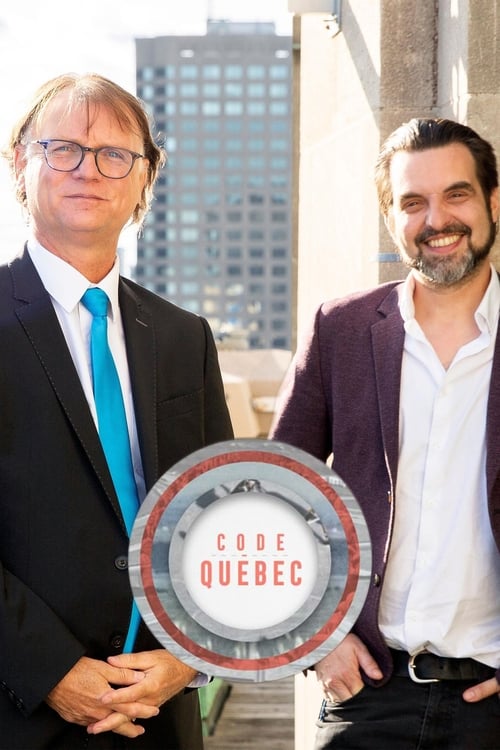
Ask Your Own Question
What is the plot?
In the opening scene of "Episode 8," the camera pans over a dimly lit room where the main character, Alex, is sitting at a table, visibly anxious. He is reviewing the data on his tablet, which shows alarming statistics about the government's surveillance program. The tension in the air is palpable as he realizes the implications of the information he has uncovered. His internal conflict is evident; he knows he must act but fears the consequences.
As the scene shifts, we see Alex meeting with his close ally, Maya, in a secluded café. They discuss the urgency of their situation, with Maya expressing her concerns about the risks involved in exposing the government's actions. Alex, determined and passionate, insists that they cannot remain silent. He proposes a plan to leak the information to the public, believing it is their only chance to incite change. Maya hesitates but ultimately agrees, motivated by her own experiences with the oppressive system.
The next sequence takes place in a high-tech facility where the government officials are seen discussing their strategies to maintain control over the populace. The atmosphere is tense, filled with paranoia as they monitor potential threats. One official, Director Lemoine, expresses his frustration over the increasing dissent among citizens. He orders heightened surveillance and the use of more aggressive tactics to suppress any opposition, setting the stage for a confrontation.
Back at Alex's apartment, he and Maya prepare for the leak. They gather evidence and finalize their digital presentation, their emotions a mix of fear and determination. As they work, they share personal stories about how the government's actions have affected their lives, deepening their bond. The stakes are high, and the weight of their decision hangs heavily in the air.
In a pivotal moment, Alex receives a message from an anonymous source warning him that the government is onto them. Panic sets in as they realize they have limited time to act. They quickly finalize their plan, deciding to broadcast the information live to ensure maximum reach. The urgency of the moment propels them into action, and they set up their equipment in a hidden location.
As they prepare to go live, the tension escalates. They can hear sirens in the distance, and the fear of being caught looms over them. Alex takes a deep breath, steeling himself for what is to come. He begins the broadcast, passionately detailing the government's abuses and calling for citizens to rise up. Maya supports him, providing additional context and urging viewers to take action.
The broadcast gains traction, and viewers begin to respond, sharing the stream and expressing their outrage. However, the government quickly reacts, deploying agents to track down the source of the transmission. The scene shifts to the agents, who are shown coordinating their efforts to locate Alex and Maya, heightening the sense of impending danger.
As the broadcast continues, Alex and Maya receive messages of support from viewers, which bolsters their resolve. However, their celebration is short-lived as they hear a loud crash outside. The agents have arrived, and the atmosphere shifts from hope to desperation. They quickly gather their equipment, knowing they must escape before they are caught.
In a tense chase sequence, Alex and Maya navigate through the back alleys of the city, evading the agents. The camera captures their frantic movements, the sound of footsteps echoing behind them. They duck into a narrow passageway, hearts racing as they try to catch their breath. The fear of capture is palpable, and they exchange worried glances, knowing that their lives are at stake.
Just when it seems they might be cornered, they find an old maintenance door and slip inside. The scene shifts to a dimly lit maintenance tunnel, where they pause to regroup. Alex expresses his determination to continue the fight, while Maya, still shaken, questions whether they can truly make a difference. Their conversation reveals their differing perspectives on hope and resistance, adding depth to their characters.
As they navigate the tunnel, they come across a group of fellow activists who have been hiding from the government. The activists share their own stories of resistance and provide Alex and Maya with a safe haven. This moment of solidarity reinforces the theme of community and collective action against oppression.
The episode culminates in a dramatic confrontation as the government agents close in on their location. The activists prepare to defend themselves, and a tense standoff ensues. Alex takes charge, rallying the group to stand together against the agents. The scene is filled with high stakes, as both sides are determined to prevail.
In the final moments, a fierce struggle breaks out. The activists use their knowledge of the tunnels to outmaneuver the agents, leading to a chaotic but strategic escape. The camera captures the intensity of the fight, with close-ups of determined faces and the sounds of struggle echoing through the tunnels.
As the episode concludes, Alex and Maya emerge from the tunnels into the night, breathless but resolute. They look at each other, a silent understanding passing between them. The fight is far from over, but they have ignited a spark of resistance that they hope will inspire others. The screen fades to black, leaving viewers on the edge of their seats, eager to see what will happen next.
Related Titles
Browse All Titles →What is the ending?
In the ending of "Citoyen 2.0," season 1, episode 8, the characters face the consequences of their actions throughout the season. The episode culminates in a tense confrontation that leads to significant revelations about trust, betrayal, and the quest for identity. The main characters grapple with their choices, leading to a resolution that sets the stage for future conflicts.
As the episode begins, the atmosphere is thick with tension. The main characters, including the protagonist, are gathered in a dimly lit room, each grappling with their own internal struggles. The protagonist, feeling the weight of their decisions, reflects on the journey that has brought them to this moment. They are torn between loyalty to their friends and the moral implications of their actions.
Scene by scene, the narrative unfolds:
The first scene opens with the protagonist pacing nervously, their face illuminated by the flickering light of a nearby screen. They are haunted by memories of past decisions, particularly a betrayal that has left a rift in their relationships. The camera captures their furrowed brow and clenched fists, emphasizing their internal conflict.
In the next scene, the group convenes to discuss the fallout from their previous actions. Tension fills the air as accusations fly. Each character's emotional state is palpable; anger, fear, and regret swirl among them. The protagonist attempts to mediate, but their voice trembles with uncertainty, revealing their struggle to maintain control over the situation.
As the confrontation escalates, a pivotal moment occurs when a character reveals a hidden truth that changes everything. The revelation sends shockwaves through the group, and the protagonist's world begins to unravel. The camera zooms in on their shocked expression, capturing the moment of realization that their trust has been misplaced.
In the following scene, the characters are forced to confront the consequences of their actions. The protagonist, feeling the weight of responsibility, steps forward to take accountability. Their voice is steady, but their eyes betray a deep sense of sorrow. They express a desire to make amends, but the damage has been done, and the group is fractured.
The climax of the episode occurs when the protagonist makes a bold decision to sacrifice their own safety for the sake of the group. This act of selflessness is met with mixed reactions; some characters are moved, while others remain skeptical. The camera captures the protagonist's determination, their jaw set, as they prepare to face the fallout.
In the final scenes, the characters begin to part ways, each reflecting on their journey. The protagonist stands alone, watching their friends leave, a mixture of hope and despair in their eyes. They understand that while they have made mistakes, there is still a chance for redemption. The episode closes with a lingering shot of the protagonist, symbolizing their ongoing struggle for identity and belonging.
As the credits roll, the fate of each main character is left somewhat ambiguous. The protagonist is left to navigate the aftermath of their choices, while the others are shown embarking on their own paths, hinting at the complexities of their relationships and the challenges that lie ahead. The episode concludes with a sense of unresolved tension, setting the stage for future developments in the story.
Is there a post-credit scene?
In "Episode 8" of "Citoyen 2.0," there is indeed a post-credit scene that adds an intriguing layer to the narrative. The scene opens with a dimly lit room, where a single flickering light bulb casts shadows on the walls. The atmosphere is tense, filled with an air of uncertainty.
As the camera pans, we see a figure hunched over a desk cluttered with papers and digital devices. The character, who is revealed to be a key antagonist from earlier in the season, is frantically typing on a laptop, their face illuminated by the screen's glow. Their expression is one of desperation mixed with determination, showcasing a deep internal conflict.
Suddenly, a notification chimes, and the character's eyes widen as they read a message that appears on the screen. The message hints at a new plan that could potentially undermine the protagonists' efforts, suggesting that the stakes are higher than ever. The character's lips curl into a smirk, revealing a sense of satisfaction and a hint of malice.
The scene closes with a close-up of the character's hand reaching for a hidden drawer in the desk, pulling out a small device that looks ominously advanced. The screen fades to black, leaving viewers with a sense of foreboding and anticipation for the next developments in the story. This post-credit moment effectively sets the stage for future conflicts and deepens the intrigue surrounding the overarching narrative of the series.
How does the conflict between the main characters escalate in this episode?
The conflict escalates when a betrayal is revealed, causing heightened tensions among the group. The protagonist confronts their former friend, leading to an emotionally charged argument that exposes deep-seated fears and insecurities, ultimately pushing the group to a breaking point.
What significant choices does the protagonist make in Episode 8 that impact their relationships?
In Episode 8, the protagonist faces a critical decision regarding their loyalty to their friends versus their commitment to the cause they believe in. This choice leads to a rift with a close ally, showcasing their internal struggle between personal connections and ideological beliefs.
What role does technology play in the events of Episode 8?
In this episode, technology is used as a double-edged sword. The characters utilize it to gather information and strategize, but it also becomes a source of manipulation and deceit, leading to unforeseen consequences that affect their plans and relationships.
How do the characters' pasts influence their actions in Episode 8?
The characters' past traumas and experiences heavily influence their decisions in this episode. Flashbacks reveal motivations behind their current actions, particularly how past betrayals shape their trust issues and drive their desire for redemption.
What emotional revelations occur between the characters in Episode 8?
In Episode 8, several emotional revelations come to light, particularly during a pivotal confrontation where characters express their vulnerabilities. This moment of honesty leads to a deeper understanding among them, but also complicates their dynamics as they grapple with the implications of their truths.
Is this family friendly?
In "Episode 8" of "Citoyen 2.0," there are several scenes and themes that may be considered objectionable or upsetting for children or sensitive viewers.
-
Intense Emotional Conflicts: The episode features heated arguments and emotional confrontations between characters, which may be distressing for younger viewers.
-
Themes of Betrayal: There are moments that explore feelings of betrayal and mistrust among characters, which could be unsettling.
-
Moral Dilemmas: Characters face difficult choices that challenge their ethics, leading to tension and anxiety that might be hard for children to process.
-
Visuals of Distress: Some scenes depict characters in distressing situations, which may evoke feelings of sadness or fear.
-
Mature Discussions: The dialogue includes mature themes and discussions that may not be suitable for younger audiences.
These elements contribute to a more complex emotional landscape that may not be appropriate for all viewers, particularly children.





















